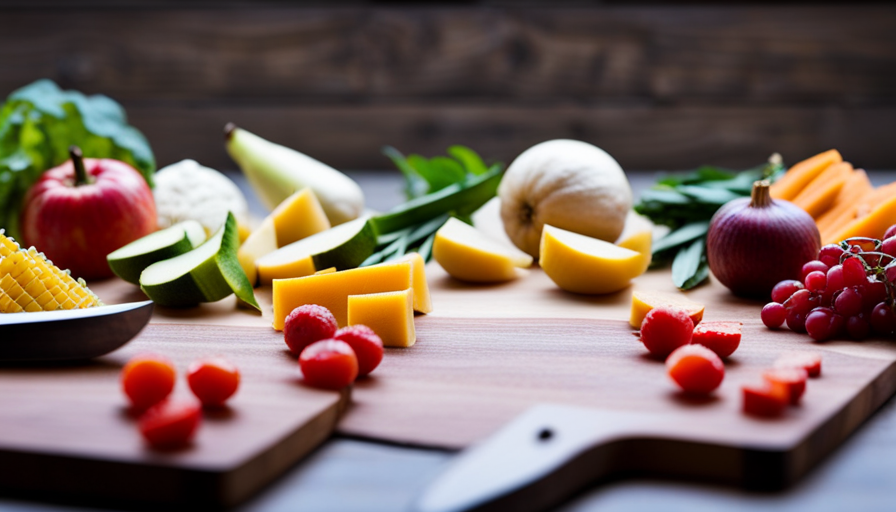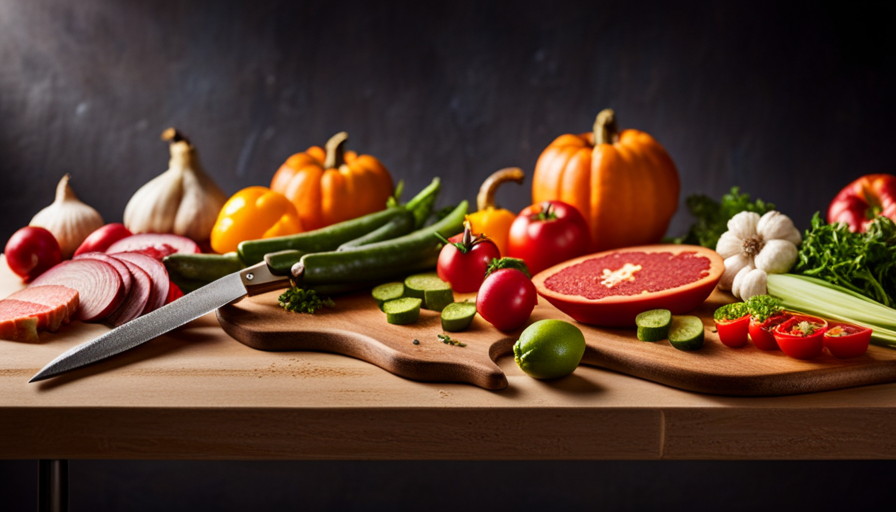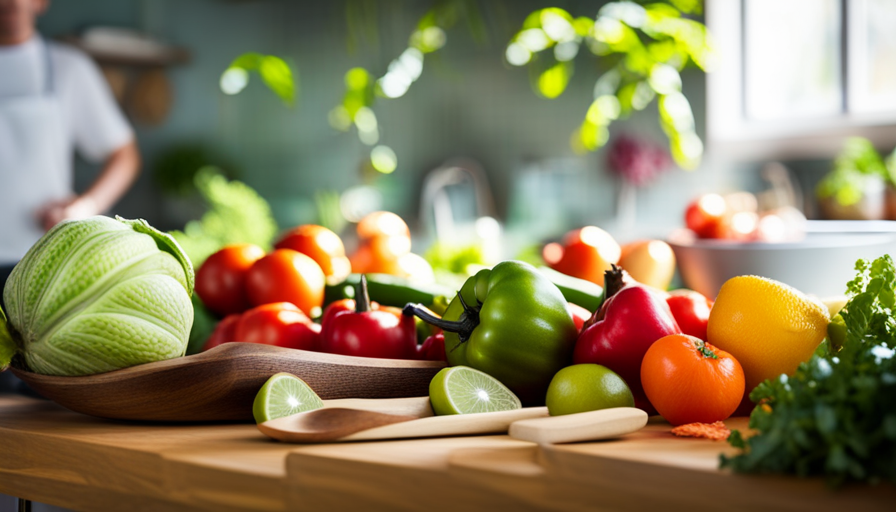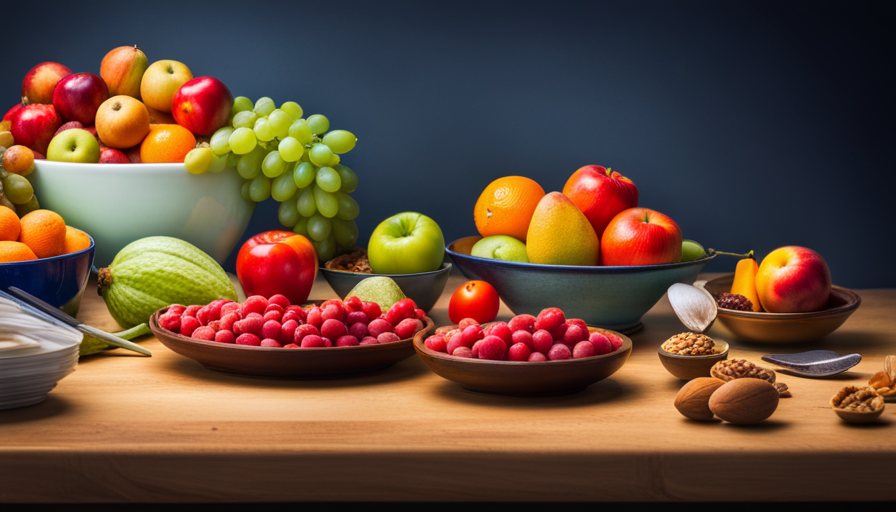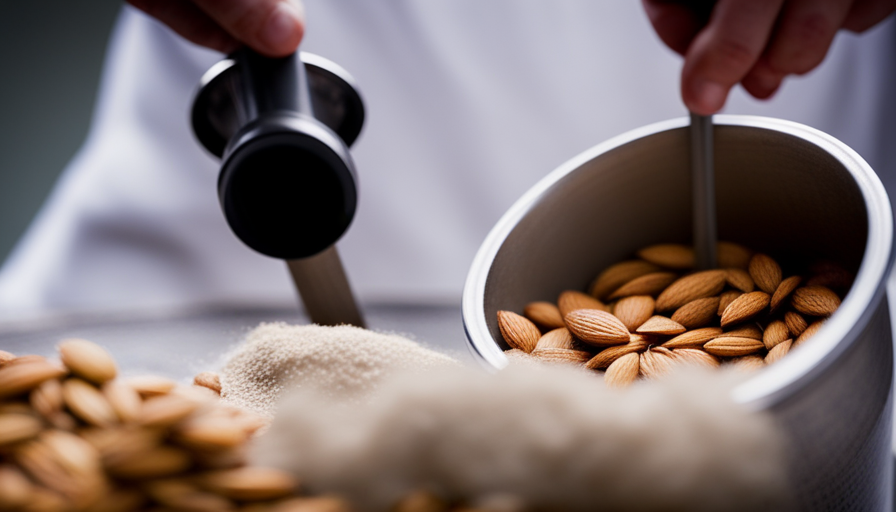Have you ever thought about why eating raw food could improve your health and energy levels, enhancing your performance? It appears that people who consume raw food often experience an increase in energy and are able to address digestive issues more effectively. Interested in learning how to prepare some raw dishes and enjoy these benefits for yourself? You’ve come to the right place.
In this article, we will guide you through the process of preparing raw food, providing you with all the necessary information and techniques to get started. From understanding the benefits of raw food to choosing the right ingredients and incorporating superfoods into your diet, we will cover it all. We’ll also discuss essential equipment, creative recipes, and offer tips for meal planning and troubleshooting common challenges.
Get ready to embark on a journey of vibrant, delicious, and nutritious raw food preparation. Let’s dive in!
Key Takeaways
- Raw food preparation maximizes nutritional benefits and retains more nutrients compared to cooked food.
- Proper storage techniques, such as keeping the refrigerator below 40 degrees Fahrenheit, prevent the growth of harmful bacteria.
- Soaking and sprouting enhance the nutritional value and digestibility of ingredients.
- Meal planning and batch preparation save time and ensure healthy raw food options are always available.
Understanding the Benefits of Raw Food
If you’re curious about the amazing benefits of raw food, you’re in for a deliciously healthy surprise! Raw food has gained popularity in recent years due to its numerous health benefits. One of the main benefits of raw food is that it retains more nutrients compared to cooked food.
When you juice fruits and vegetables, you extract the liquid goodness, making it easier for your body to absorb all the vitamins and minerals. Juicing also helps to alkalize your body, which can promote overall health and reduce the risk of chronic diseases.
Another important aspect of raw food is the concept of food combining. This involves eating certain food groups together to optimize digestion and nutrient absorption. For example, combining leafy greens with a healthy fat like avocado or nuts can enhance the absorption of fat-soluble vitamins. Similarly, pairing fruits with leafy greens can improve the uptake of iron.
By understanding the principles of food combining, you can maximize the nutritional benefits of the raw food you consume.
The benefits of juicing and the importance of food combining are two key aspects of raw food preparation. By incorporating these practices into your diet, you can enjoy a wide range of health benefits, including increased nutrient absorption and improved overall well-being.
So go ahead and explore the world of raw food – your body will thank you!
Choosing the Right Ingredients
When selecting ingredients for a delectable raw dish, it’s crucial to opt for the freshest and highest-quality options available. Start by choosing organic produce, which is grown without the use of synthetic pesticides or fertilizers. Organic fruits and vegetables are not only healthier for you, but they also have a higher nutritional content, making them ideal for raw food preparations.
Look for the organic label when shopping for ingredients to ensure you’re getting the best quality.
Additionally, sourcing local ingredients can elevate the taste and freshness of your raw dishes. Local produce is often harvested at its peak ripeness and doesn’t have to travel long distances, which means it retains more nutrients and flavor. Visit farmers’ markets or join a community-supported agriculture (CSA) program to support local farmers and get access to a variety of seasonal ingredients.
When choosing your ingredients, consider the flavor profiles and textures you want to achieve in your raw dish. Experiment with different combinations of fruits, vegetables, herbs, and spices to create a well-balanced and flavorful meal. Don’t be afraid to try new and unique ingredients that you may not be familiar with. The key is to have fun and be creative with your choices.
Remember, the quality of your ingredients will greatly impact the taste and nutritional value of your raw dishes. So, take the time to choose organic produce and source local ingredients for an incredible dining experience.
Proper Food Safety Practices
To ensure a safe and enjoyable meal, it’s essential to follow proper food safety practices. Foodborne illnesses can be easily prevented by taking the necessary precautions.
One of the most important aspects of food safety is proper storage techniques. When it comes to storing raw food, it’s crucial to keep it in the right conditions to prevent the growth of harmful bacteria. Always store raw meat, poultry, and seafood in sealed containers or plastic bags to avoid cross-contamination. Make sure to place them on the bottom shelf of the refrigerator to prevent any juices from dripping onto other foods.
Additionally, it’s important to keep your refrigerator at the right temperature. The ideal temperature for storing raw food is below 40 degrees Fahrenheit (4 degrees Celsius). This helps slow down the growth of bacteria and keeps your food fresh for longer.
Properly labeling your raw food is also essential. Clearly mark the date of purchase on all containers to ensure you use them before they spoil. This will help you avoid consuming expired food and reduce the risk of foodborne illnesses.
By following these proper food safety practices, you can enjoy your raw food without worrying about any potential health risks. Remember, a little extra effort in storing and handling your food can go a long way in keeping you and your loved ones safe.
Knife Skills and Basic Cutting Techniques
Using proper knife skills and basic cutting techniques can greatly enhance your culinary experience, allowing you to effortlessly slice through vegetables like a seasoned chef. Knife techniques are crucial for achieving consistent and professional-looking cuts in your food preparations.
By mastering these skills, you can ensure that your ingredients cook evenly and yield the desired texture in your dishes.
One fundamental technique is the ‘rocking’ motion, where you pivot the knife back and forth on the cutting board using the blade’s tip as a pivot point. This technique is perfect for mincing garlic, herbs, or creating fine slices of vegetables.
Another essential skill is the ‘pinch grip,’ where you hold the knife firmly with your thumb and index finger on the blade, providing better control and precision.
To achieve uniform cuts, it’s important to maintain a consistent knife angle and apply even pressure. For example, when dicing an onion, start by cutting off both ends, then slice it in half vertically. Make horizontal cuts, leaving the root intact, and finally, make vertical cuts to achieve perfectly diced pieces.
By mastering knife skills and basic cutting techniques, you can elevate your cooking game and make meal preparation a breeze. Practice these techniques regularly, and soon enough, you’ll be effortlessly slicing, dicing, and chopping like a pro.
Essential Equipment for Raw Food Preparation
Get ready to take your culinary skills to the next level with the essential equipment that’ll make your raw food preparation a breeze! When it comes to preparing raw food, having the right tools can make all the difference.
Here are some must-have kitchen gadgets and raw food preparation tools that’ll help you create delicious and nutritious dishes with ease:
-
High-Speed Blender: A high-speed blender is essential for making smoothies, sauces, and dressings. It can easily blend fruits, vegetables, and nuts into a smooth and creamy consistency.
-
Food Processor: A food processor is perfect for chopping, shredding, and slicing fruits and vegetables. It can also be used to make nut butters, raw desserts, and even raw pizza crusts.
-
Spiralizer: A spiralizer is a great tool for creating noodles and ribbons out of vegetables like zucchini and carrots. It’s perfect for making raw pasta dishes or adding a fun twist to your salads.
-
Dehydrator: A dehydrator is used to remove moisture from fruits, vegetables, and nuts, allowing them to become crispy and flavorful. It’s great for making raw crackers, chips, and dried fruits.
-
Mandoline Slicer: A mandoline slicer is ideal for creating thin and even slices of fruits and vegetables. It’s perfect for making raw lasagna, vegetable wraps, or adding a professional touch to your salads.
Having these raw food preparation tools in your kitchen won’t only make your life easier but also open up a whole new world of culinary possibilities. So, invest in these gadgets and get ready to create delicious and healthy raw food dishes like a pro!
Soaking and Sprouting for Enhanced Nutrition
Enhance the nutritional value of your dishes by soaking and sprouting ingredients like nuts, seeds, and grains, which can add a delightful crunch and boost their digestibility. Soaking techniques and sprouting methods are simple yet effective ways to unlock the full potential of these ingredients.
Soaking involves immersing ingredients in water for a certain amount of time, allowing them to soften and become more easily digestible. This process also helps to remove enzyme inhibitors and anti-nutrients, making the nutrients more bioavailable. For example, soaking almonds overnight can make them easier to blend into a creamy nut milk.
Sprouting takes soaking a step further by allowing the ingredients to germinate. This activates enzymes that increase the nutrient content and make the sprouts easier to digest. To sprout, simply rinse and drain soaked nuts, seeds, or grains several times a day until sprouts appear.
To give you a better understanding, here is a table summarizing some common soaking and sprouting times for different ingredients:
| Ingredient | Soaking Time | Sprouting Time |
|---|---|---|
| Almonds | 8-12 hours | 2-3 days |
| Chia Seeds | 20 minutes | N/A |
| Quinoa | 2-4 hours | 1-3 days |
| Lentils | 8-12 hours | 2-3 days |
| Sunflower Seeds | 4-6 hours | 1-2 days |
By incorporating soaking and sprouting into your raw food preparation, you not only enhance the flavor and texture of your dishes but also boost their nutritional value. So go ahead and give these techniques a try to take your raw food creations to the next level.
Creative Raw Food Recipes
Soaking and sprouting techniques have been discussed as methods to enhance the nutritional value of raw foods. Now, let’s dive into the world of creative raw food recipes, particularly focusing on raw food desserts and quick raw food recipes that you can easily prepare in your own kitchen.
When it comes to raw food desserts, the possibilities are endless. From creamy cashew cheesecakes to decadent chocolate avocado mousse, these desserts not only satisfy your sweet tooth but also provide a nutritious alternative to traditional treats. By using ingredients like dates, nuts, and fruits, you can create delicious desserts that are packed with vitamins, minerals, and antioxidants.
In addition to desserts, there are plenty of quick and easy raw food recipes that you can enjoy as meals or snacks. From zucchini noodles with pesto sauce to fresh spring rolls filled with colorful vegetables, these recipes are not only bursting with flavor but also provide you with essential nutrients in their raw and unprocessed state.
So, whether you’re looking to indulge in a guilt-free dessert or whip up a quick and nutritious meal, experimenting with raw food recipes can open up a whole new world of culinary delights. Get ready to tantalize your taste buds and nourish your body with these delightful creations!
Incorporating Superfoods into Your Raw Food Diet
Are you ready to take your raw food diet to the next level by incorporating powerful and nutrient-rich superfoods? Superfoods are a great way to boost your health and add extra nutrients to your meals.
Here are some creative ways to incorporate superfoods into your raw food diet:
-
Add superfoods to your smoothies: Smoothies are a delicious and convenient way to incorporate superfoods into your diet. Try adding a handful of spinach or kale to your smoothie for an extra dose of vitamins and minerals. You can also add superfood powders like spirulina or maca for an added boost of nutrients.
-
Create superfood salads: Salads are a staple in a raw food diet, and adding superfoods can take them to the next level. Try adding some goji berries, chia seeds, or hemp seeds to your salad for a nutrient-packed meal.
-
Make superfood desserts: Who said desserts can’t be healthy? You can make delicious raw desserts using superfoods like cacao powder, coconut oil, and dates. Try making a raw chocolate mousse or a superfood energy ball for a guilt-free treat.
Incorporating superfoods into your raw food diet can be fun and exciting. Experiment with different superfood recipes and find what works best for you. Remember to always choose high-quality superfoods and enjoy the benefits they bring to your health.
Tips for Meal Planning and Batch Preparation
Get organized and save time by planning your meals ahead and preparing batches of ingredients in advance. Meal prepping is a great way to ensure that you always have healthy, raw food options available and it can help you stay on track with your raw food diet. By spending a little time each week to plan and prepare, you can make your raw food journey much more manageable.
One of the key aspects of meal prepping is time management. By setting aside a specific time each week to plan your meals and prepare your ingredients, you can save yourself a lot of time and stress throughout the week. Use a simple table to plan out your meals for the week, including breakfast, lunch, and dinner. On one side of the table, list the meals you plan to have each day, and on the other side, list the ingredients you will need. This will help you stay organized and ensure that you have all the necessary ingredients on hand.
Batch preparation is another time-saving technique that can make your raw food journey easier. Instead of preparing individual meals each day, try to prepare larger batches of ingredients that can be used in multiple dishes. For example, you can chop a variety of vegetables and store them in separate containers, ready to be added to salads, stir-fries, or wraps throughout the week. This not only saves time but also ensures that you have a variety of ingredients available to create different dishes.
By incorporating meal prepping and batch preparation into your raw food routine, you can streamline your cooking process and make it much more efficient. This will not only save you time, but it will also make it easier to stick to your raw food diet. So, take the time to plan and prepare in advance, and enjoy the benefits of a well-organized raw food lifestyle.
Troubleshooting Common Challenges in Raw Food Preparation
Now that you’ve mastered the art of meal planning and batch preparation, it’s time to tackle some common challenges that may arise when preparing raw food.
Troubleshooting food presentation and managing time constraints are two key areas that can greatly impact the success of your raw food endeavors.
When it comes to troubleshooting food presentation, it’s important to remember that raw food can be just as visually appealing as cooked food. One common challenge is making sure that your dishes are vibrant and visually appealing. You can achieve this by incorporating a variety of colorful fruits and vegetables, using different textures, and garnishing with fresh herbs or edible flowers.
Managing time constraints is another challenge that many raw food enthusiasts face. It can be overwhelming to think about all the preparation and planning that goes into creating raw meals. One tip to help with this is to set aside dedicated time for meal prep. This way, you can batch prepare certain components, such as chopping vegetables or soaking nuts, which will save you time during the week.
By troubleshooting food presentation and managing your time effectively, you’ll be well on your way to successfully preparing raw food that’s not only delicious but also visually appealing. So get ready to impress your taste buds and dazzle your eyes with your raw food creations!
Frequently Asked Questions
Can raw food be cooked or should it always be eaten raw?
Raw food can be cooked, but the health benefits may be compromised. As the saying goes, "If it ain’t broke, don’t fix it." Cooking raw food alters its natural state, potentially reducing its nutritional value.
Raw food enthusiasts believe that consuming food in its raw form preserves its enzymes, vitamins, and minerals. While cooking can enhance flavors and improve digestibility, it’s important to strike a balance between cooked and raw foods to ensure optimal health benefits.
What are some common misconceptions about raw food?
Common misconceptions about raw food include the belief that it lacks flavor, is difficult to digest, and lacks essential nutrients. However, raw food can be flavorful if prepared with the right seasonings and ingredients.
Contrary to popular belief, raw food is actually easier to digest as it contains natural enzymes that aid in digestion. Additionally, raw food is packed with health benefits, such as increased energy levels, improved digestion, and a stronger immune system.
Are there any specific types of raw foods that should be avoided?
Remember the saying, ‘You are what you eat.’ When it comes to raw food, there are a few specific types you should avoid to protect your health.
Raw eggs, for example, can contain harmful bacteria like salmonella.
Raw meat, especially poultry and pork, can also carry bacteria and parasites that can make you sick.
Unpasteurized dairy products and sprouts are other raw foods that may pose health risks.
Stay informed and make smart choices for your well-being.
How can I ensure that I am getting all the necessary nutrients from a raw food diet?
To ensure you’re getting all the necessary nutrients from a raw food diet, it’s important to focus on maintaining a balanced diet. Include a variety of fruits, vegetables, nuts, seeds, and sprouted grains. These foods offer a wide range of vitamins, minerals, and antioxidants.
However, be aware of potential health risks associated with a raw food diet, such as nutrient deficiencies and foodborne illnesses. Consulting a healthcare professional or nutritionist can help you ensure nutrient balance and minimize any potential risks.
Are there any tips for transitioning to a raw food diet gradually?
To transition gradually to a raw food diet, start by incorporating more raw fruits and vegetables into your meals. Gradually increase the amount of raw food while reducing cooked food. Experiment with different recipes and incorporate raw nuts, seeds, and sprouted grains for added variety and nutrients. Remember to stay hydrated and listen to your body’s needs.
The benefits of a raw food diet include improved digestion, increased energy levels, and a boost in nutrient intake.
Can Raw Turmeric Be Included in a Raw Food Diet?
Yes, incorporating raw turmeric in food is beneficial for a raw food diet. Raw turmeric contains powerful anti-inflammatory and antioxidant properties. It can be added to smoothies, salads, dressings, or juices. Consuming raw turmeric can help boost immunity and aid in digestion, making it a great addition to a raw food diet.
Conclusion
In conclusion, you now have all the tools and knowledge to embark on your raw food journey. By understanding the benefits of raw food and choosing the right ingredients, you can nourish your body with wholesome goodness.
Remember to prioritize food safety practices and develop your knife skills for efficient cutting techniques. Equipping yourself with essential tools and experimenting with creative recipes will elevate your raw food experience. Don’t forget to incorporate superfoods and plan your meals ahead for successful batch preparation.
With these tips, you can conquer any challenges that may arise and enjoy the vibrant world of raw food. Happy prepping!

